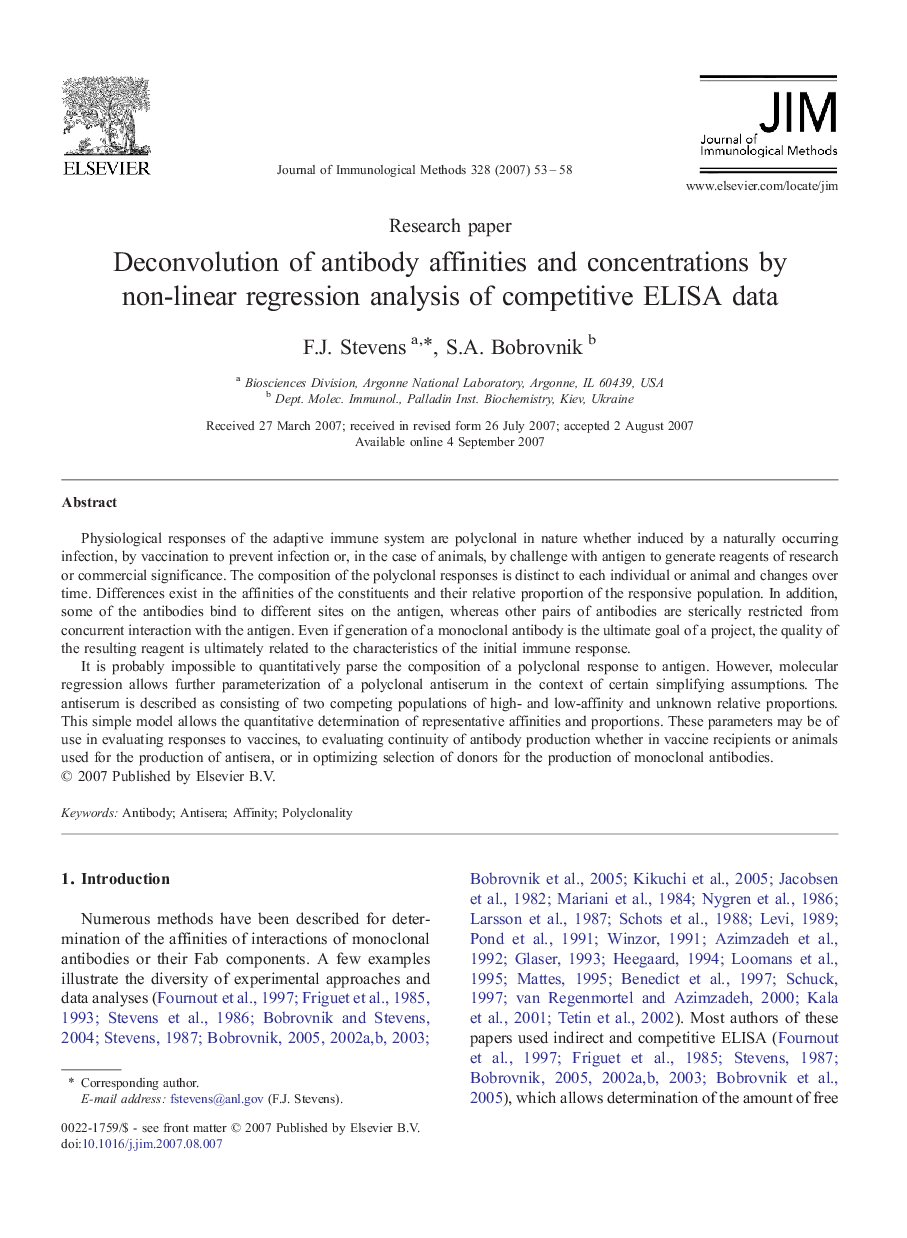| Article ID | Journal | Published Year | Pages | File Type |
|---|---|---|---|---|
| 2089035 | Journal of Immunological Methods | 2007 | 6 Pages |
Physiological responses of the adaptive immune system are polyclonal in nature whether induced by a naturally occurring infection, by vaccination to prevent infection or, in the case of animals, by challenge with antigen to generate reagents of research or commercial significance. The composition of the polyclonal responses is distinct to each individual or animal and changes over time. Differences exist in the affinities of the constituents and their relative proportion of the responsive population. In addition, some of the antibodies bind to different sites on the antigen, whereas other pairs of antibodies are sterically restricted from concurrent interaction with the antigen. Even if generation of a monoclonal antibody is the ultimate goal of a project, the quality of the resulting reagent is ultimately related to the characteristics of the initial immune response.It is probably impossible to quantitatively parse the composition of a polyclonal response to antigen. However, molecular regression allows further parameterization of a polyclonal antiserum in the context of certain simplifying assumptions. The antiserum is described as consisting of two competing populations of high- and low-affinity and unknown relative proportions. This simple model allows the quantitative determination of representative affinities and proportions. These parameters may be of use in evaluating responses to vaccines, to evaluating continuity of antibody production whether in vaccine recipients or animals used for the production of antisera, or in optimizing selection of donors for the production of monoclonal antibodies.
